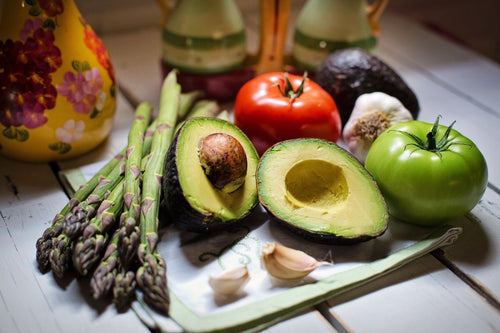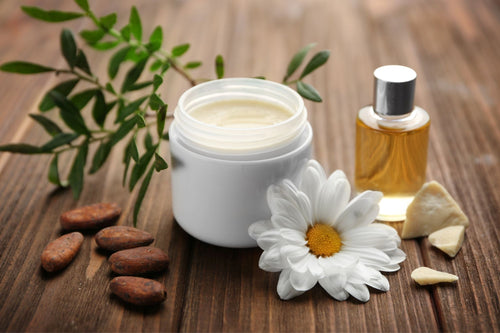Moringa oleifera, often called the 'miracle tree,' amazes with its impressive nutritional diversity and numerous health benefits. In this article, you'll discover why moringa is considered the most amazing superfood, which parts of the tree are edible, and how to incorporate this transformative food into your diet.
Moringa - The amazing superfood from Africa
Why is Moringa known as a superfood?
Moringa oleifera, also known as the "miracle tree," has become one of the world's most popular superfoods in recent years. This fascinating plant originates from India and is highly valued for its impressive nutritional diversity and health-promoting properties.
Moringa is characterized by its exceptionally high content of vitamins, minerals, and antioxidants. The plant contains more vitamin C than oranges, more calcium than milk, more iron than spinach, and more potassium than bananas.
- Moringa is rich in vital nutrients such as protein, vitamins A, B, C, D and E as well as minerals such as calcium, magnesium, potassium, iron and zinc.
- The antioxidants it contains, such as quercetin, chlorogenic acid and beta-carotene, help neutralize free radicals in the body and slow down the aging process.
- Studies show that moringa can lower cholesterol, regulate blood sugar levels and even have anti-cancer effects.
- It's no wonder, then, that Moringa is also known as "nature's miracle cure." Its ingredients make the plant a true all-rounder for health.
Moringa is indeed an impressive superfood, surprising with its unique nutrient composition and diverse health benefits. It's no wonder it's gaining more and more followers worldwide!
Which parts of the Moringa tree are edible?
Amazingly, the entire Moringa tree is edible and can be used in a variety of ways in the kitchen. Each part of the plant has its own unique properties and uses.
The leaves of the Moringa tree are considered the most nutrient-rich part of the plant. They contain a balanced spectrum of proteins, vitamins, minerals, and antioxidants. Therefore, the leaves are often used as an ingredient in smoothies, salads, or soups.
- The leaves can be eaten raw, cooked, or dried. They can be processed into a powder and taken as a dietary supplement.
- In addition to the leaves, the seeds, pods, flowers and roots of the Moringa tree are also edible and can be used in many different ways in the kitchen.
- The seeds can be roasted and eaten, or processed into oil. Moringa oil is characterized by its high content of oleic acid and antioxidants.
- The pods of the Moringa tree resemble green beans and can be prepared in the same way. They also contain many valuable nutrients.
- The flowers have a slightly sweet taste and can be mixed raw into salads or smoothies.
- The roots of the tree are also edible, but due to their pungent taste they should only be consumed in small quantities.
The versatility of the moringa tree is truly impressive. Every part of the plant holds enormous nutritional potential and can be creatively used in the kitchen. It's no wonder that moringa has been valued in traditional medicine for centuries.
Where is Moringa traditionally used?
Moringa oleifera has long been a well-known medicinal and food product in Asia and Africa. The plant plays a significant role in traditional medicine and nutrition, particularly in countries such as India, Pakistan, and Ethiopia.
In India, Moringa has been used since ancient times to treat a variety of ailments. The leaves, seeds, flowers, and roots of the plant are used to treat colds, joint pain, diabetes, high blood pressure, and many other health problems.
- Moringa leaves are used in curries, dal dishes, and samosas. A high-quality edible oil is pressed from the seeds, which is also applied externally to the skin.
- In Ethiopia, moringa is also an integral part of traditional cuisine. The leaves are processed into a nutritious vegetable that is especially recommended for pregnant women and nursing mothers.
- In some regions of Africa, Moringa powder is also used as a dietary supplement to combat nutritional deficiencies, especially in children.
- In addition, the Moringa tree also serves as an important source of animal feed in poorer countries and provides valuable firewood.
- Recently, Moringa has also been gaining increasing popularity in Western countries, as more and more people are discovering the diverse benefits of this miracle plant.
Moringa has long held a firm place in nutrition and medicine in many parts of the world. The use of the various parts of the plant demonstrates how versatile and valuable the Moringa tree is. It's no wonder, then, that it is increasingly gaining attention in the West.
The wonderful Moringa leaf: A multi-talent for health and well-being
How does Moringa support the immune system?
Moringa is a true miracle herb that not only promotes general health but also strengthens the immune system. The leaves are rich in important nutrients such as vitamin C, iron, and zinc, all of which play a crucial role in a functioning immune system.
The diverse properties of Moringa for a strong immune system:
- Moringa contains high amounts of vitamin C, which stimulates the formation of white blood cells and thus strengthens the body's immune system.
- The high iron content in Moringa leaves promotes the formation of red blood cells and thus supports oxygen transport in the body.
- Zinc is an important trace element that boosts immune cell activity and reduces inflammation. Moringa is an excellent source of this essential mineral.
- In addition, the leaves contain secondary plant substances such as flavonoids, which have an antioxidant effect and can neutralize free radicals.
By consuming Moringa, you can easily strengthen your body's resistance to pathogens and stress and optimally support your immune system.
To what extent does Moringa have anti-inflammatory effects?
In addition to its immune-boosting effects, Moringa also exhibits pronounced anti-inflammatory properties. This is primarily due to its high content of valuable secondary plant substances.
The anti-inflammatory active ingredients in Moringa:
- The leaves contain high amounts of flavonoids such as quercetin and kaempferol, which have been shown to reduce inflammatory processes in the body.
- Moringa also contains significant amounts of carotenoids such as beta-carotene, which also have anti-inflammatory effects.
- In addition, the leaves also contain glucosinolates, which can influence the activity of enzymes involved in inflammatory reactions.
- Last but not least, studies have shown that moringa can reduce the production of inflammatory mediators such as prostaglandins and leukotrienes.
Thanks to these diverse anti-inflammatory active ingredients, Moringa can provide support for a wide range of complaints such as joint pain, arthrosis or skin irritations and protect the body from harmful inflammatory processes.
Why is Moringa nutritious and rich in vitamins?
Moringa is not only characterized by its immune-boosting and anti-inflammatory properties, but is also an extremely nutrient-rich food. The leaves contain an impressive range of vitamins, minerals, and other valuable ingredients.
The impressive nutritional diversity of Moringa:
- Moringa is an excellent source of vitamin A in the form of beta-carotene, which is important for the eyes, skin and mucous membranes.
- The leaves are also rich in vitamin C, an important antioxidant and cofactor for many bodily functions.
- In addition, Moringa contains significant amounts of vitamin E, which protects cell membranes and promotes blood circulation.
- The leaves contain mainly calcium, potassium, iron, magnesium and zinc, which are essential for bones, muscles and nerves.
- Secondary plant substances such as flavonoids, glucosinolates and tannins also contribute to the high nutrient content and support health in many ways.
In summary, Moringa is a true superfood candidate due to its impressive variety of nutrients, providing the body with all important vitamins, minerals and other valuable ingredients, thus ensuring optimal health and well-being.
The versatile benefits of Moringa: From powder to delicious recipes
What are the best ways to consume Moringa?
Moringa, also known as the "miracle tree," is a fascinating plant that has gained increasing popularity in recent years. This nutrient-rich superfood offers a host of health benefits, making it a valuable part of a balanced diet.
Moringa can be integrated into everyday life in many ways to maximize its benefits.
- Moringa powder is one of the most common and convenient ways to consume moringa. The finely ground powder can be easily incorporated into smoothies, shakes, soups, or even baked goods.
- Fresh moringa leaves can also be eaten raw in salads, wraps, or as a vegetable side dish. They offer a crunchy texture and a mild, nutty flavor.
- Moringa capsules or tablets allow for easy, portable consumption, ideal for on the go or as a dietary supplement.
- Moringa tea is a refreshing and healthy alternative to traditional teas. Brewing the dried leaves produces an aromatic beverage packed with nutrients.
- Moringa oil can be used both internally and externally. It is excellent for skin and hair care.
- Whether as a powder, leaf, capsule or oil - Moringa offers a variety of ways to integrate its benefits into everyday life and benefit from its high nutritional value.
Moringa is indeed an extremely versatile superfood that can be incorporated into your diet in a variety of ways. With a little creativity, the possibilities are endless.
How to prepare moringa powder for smoothies?
Moringa powder is an excellent way to incorporate the nutritional benefits of this wonder plant into your daily routine. It's especially popular in smoothies, as the powder blends seamlessly into the creamy texture.
Preparing Moringa smoothies is incredibly easy and offers countless variations.
-
Start with a base of fruit like bananas, berries, or mangoes. These add natural sweetness and creaminess to the smoothie.
-
Then add other ingredients to taste, such as leafy greens, yogurt, milk, or almond milk. This creates a nutrient-rich, balanced drink.
-
Finally, stir in one to two teaspoons of moringa powder. The powder's fine consistency will distribute evenly throughout the smoothie.
-
For maximum nutrients, you can also add sprouted seeds, nuts, or superfood ingredients like chia seeds or spirulina.
-
Try different combinations to find your perfect moringa smoothie. The possibilities are endless!
- With the right mix of ingredients, you can create delicious, nutrient-dense smoothies that provide the body with valuable vitamins, minerals and antioxidants.
Moringa powder is an excellent way to give smoothies an extra boost of nutrients. The wide variety of combinations allows for a variety of flavors.
Which delicious recipes contain Moringa?
Besides smoothies, there are countless other ways to incorporate moringa into your cooking. This superfood can be creatively incorporated into a variety of dishes, giving them not only a nutritional boost but also a unique flavor.
From savory main courses to sweet desserts, Moringa can be used in many ways.
-
Moringa noodles or rice are a healthy alternative to traditional carbohydrate sources. They provide fiber as well as important vitamins and minerals.
-
In soups and stews, moringa powder provides an aromatic note and rich consistency.
-
Moringa pesto is versatile - as a spread, pasta sauce or dip.
-
Moringa cookies, cakes or muffins not only add color to the bakery, but also provide plenty of nutritional value.
-
Moringa oil is ideal for frying and cooking because it has a high smoke point and contains healthy fatty acids.
-
The combination of Moringa and creative recipes opens up countless possibilities for integrating the benefits of this miracle plant into everyday life.
- Whether savory or sweet - Moringa can be used in many ways in the kitchen and enriches dishes not only with its taste but also with its high nutritional value.
Moringa is much more than just a smoothie additive. With a little experimentation, you can create countless delicious recipes that provide the body with valuable nutrients. This makes it easy to incorporate this superfood into a balanced diet.
Q&A
What are the health benefits of Moringa?
Moringa is rich in vitamins, minerals and antioxidants that boost the immune system, regulate blood sugar levels and have anti-inflammatory effects.
Which parts of the Moringa tree are edible?
All parts of the Moringa tree are edible: leaves, seeds, pods, flowers, and roots. Each of these parts has its own nutrients and uses.
How can you incorporate Moringa into your diet?
Moringa can be consumed in powder, fresh leaves, capsules, tea, or oil form. It's ideal for smoothies, salads, soups, and baked goods.
Why is Moringa known as 'nature's miracle cure'?
The high nutrient density and the multitude of health benefits make Moringa a unique food that is valued in traditional medicine.
Are there any delicious recipes with Moringa?
Yes, moringa can be used in various recipes, including moringa noodles, pesto, cookies, and it can be used as an ingredient in soups and smoothies.
In summary, moringa is not only an extremely versatile food, but also a valuable superfood, boasting impressive nutritional composition and health-promoting properties. From immune system support and anti-inflammatory effects to enriching your diet, moringa offers benefits that are hard to overstate.









